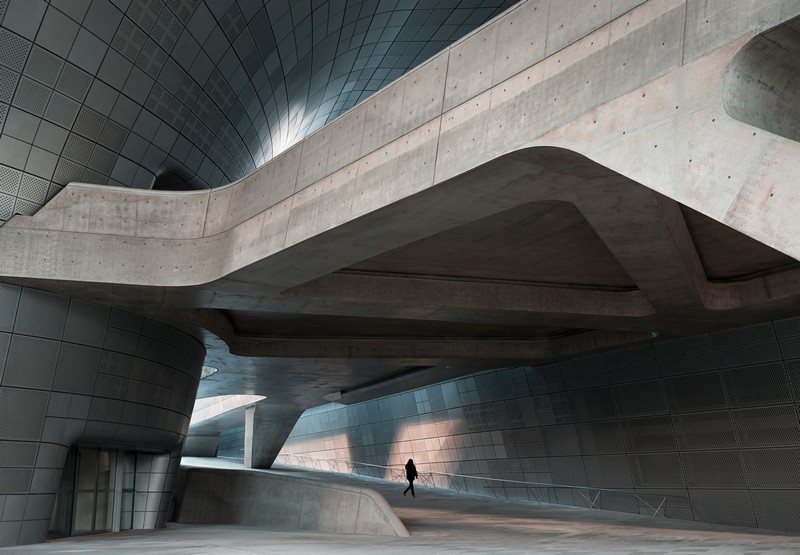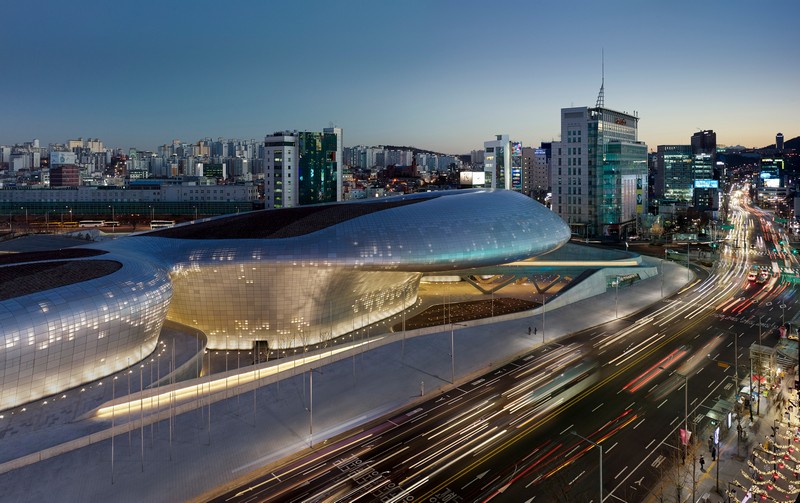
The Construction industry with its ever-evolving demands for innovative design, efficiency in logistics, reduced carbon emissions, and the incorporation of renewable technologies, is within the forefront of our global efforts in promoting advancements towards sustainable development.
By Kaloyan Erevinov – Senior Associate at Zaha Hadid Architects
The façade industry, as an integral part of the construction sector, plays a crucial role in shaping the inherent sustainability and energy efficiency of buildings. The current issues we face in the broader construction sector and the façade industry in terms of the design, manufacture, logistics, carbon footprint, and the integration of renewable technologies are extensive, so it is important for us all to be aware of these factors, trends and potential solutions which can pave the way for a greener and more sustainable future.
In recent years, there has been a growing emphasis on architectural designs whereby aesthetics and functional aspects work in synergy. This means architects, developers, and clients seek innovative façade designs that are visually appealing whilst maximizing energy efficiencies for occupant comfort. Therefore, striking a perfect balance between artistic expression and sustainability measures by means of integrating advanced design software and technologies can aid us in optimizing and simulating façade performance to identify efficient and aesthetically balanced design solutions.
We know that buildings by and large, are responsible for a very significant portion of global energy consumption and greenhouse gas emissions. The development of advanced insulating materials has shown promise in significantly reducing energy consumption, but it is equally important to implement efficient design measures. The thermal performance of facade systems have a direct impact to the energy efficiency of buildings, and the industry is continually exploring ways to enhance thermal insulation, optimize glazing systems, and integrate smart technologies to regulate interior temperatures more efficiently.
It is also imperative that the façade industry looks to source sustainable materials and adopting environmentally friendly manufacturing processes. The use of energy-intensive materials (like concrete and steel) continues to raise concerns about their carbon footprint, and there is a growing interest in exploring alternative materials, such as bio-based composites, recycled materials, and engineered wood products, which are sustainably sourced and will offer lower embodied carbon. Furthermore, the adoption of eco-friendly manufacturing practices, such as 3D printing and modular construction, can also further reduce waste and energy consumption.
The construction industry’s global nature demands an intricate logistics and supply chain management. Local sourcing and the development of regional supply chains can reduce the environmental impact and enhance project resilience, and efficient transportation of materials and components can also look to reduce cost and carbon emissions. Digital technologies, such as Building Information Modeling (BIM) and Real-Time Location Systems (RTLS), can therefore be valuable tools for streamlining logistics and optimizing material use over projects.
As the construction sector comes under further scrutiny for its significant carbon emissions throughout the life cycle of buildings (from their operational phases to their eventual demolition), Life Cycle Assessment (LCA) can look to provide comprehensive views of the environmental impact from our built environment. This will enable designers and developers to make informed and positive decisions to minimize emissions, by adopting low-carbon construction methods and adopt renewable energy sources for carbon-neutral (or even carbon-negative) contributions to the environment.
The façade industry is also shifting further towards the integration of renewable energy technologies into building skins, with Solar photovoltaic (PV) panels, solar thermal collectors, and building-integrated wind turbines as examples of energy-generating façade elements. Furthermore, smart façades equipped with sensors and adaptive shading systems optimize energy use by responding to external conditions and occupant behaviours.
As we face more frequent extreme weather events due to climate change, the construction the design of façades needs to be responsive to these increasingly intense and adverse conditions over the long run.
The façade industry and the construction sector in general, are undergoing transformative changes as they tackle the myriad of pressing issues in energy efficiency, sustainable materials, logistics, carbon reduction, and renewable energy integration.
Policymakers play a crucial role, in forging initiatives and policies to further stimulate and advocate the implementation of sustainable practices for architects, engineers, manufacturers to drive positive innovation. By prioritizing energy-efficient designs the industry on the whole, can look to make significant contributions towards a more sustainable and resilient built environment.
Collaboration amongst stakeholders and the relentless pursuit of innovative solutions will shape the future of the façade industry and construction, leading us towards a greener and more sustainable world.
Credits: Dongdaemun Design Plaza: Leeza SOHO: Sky SOHO






















